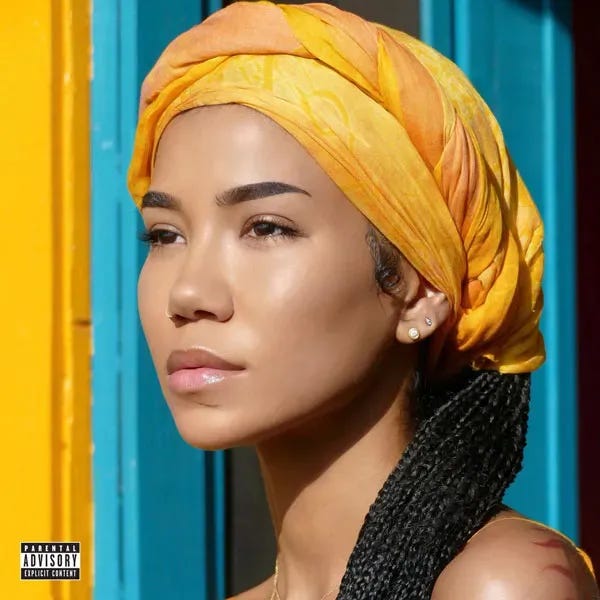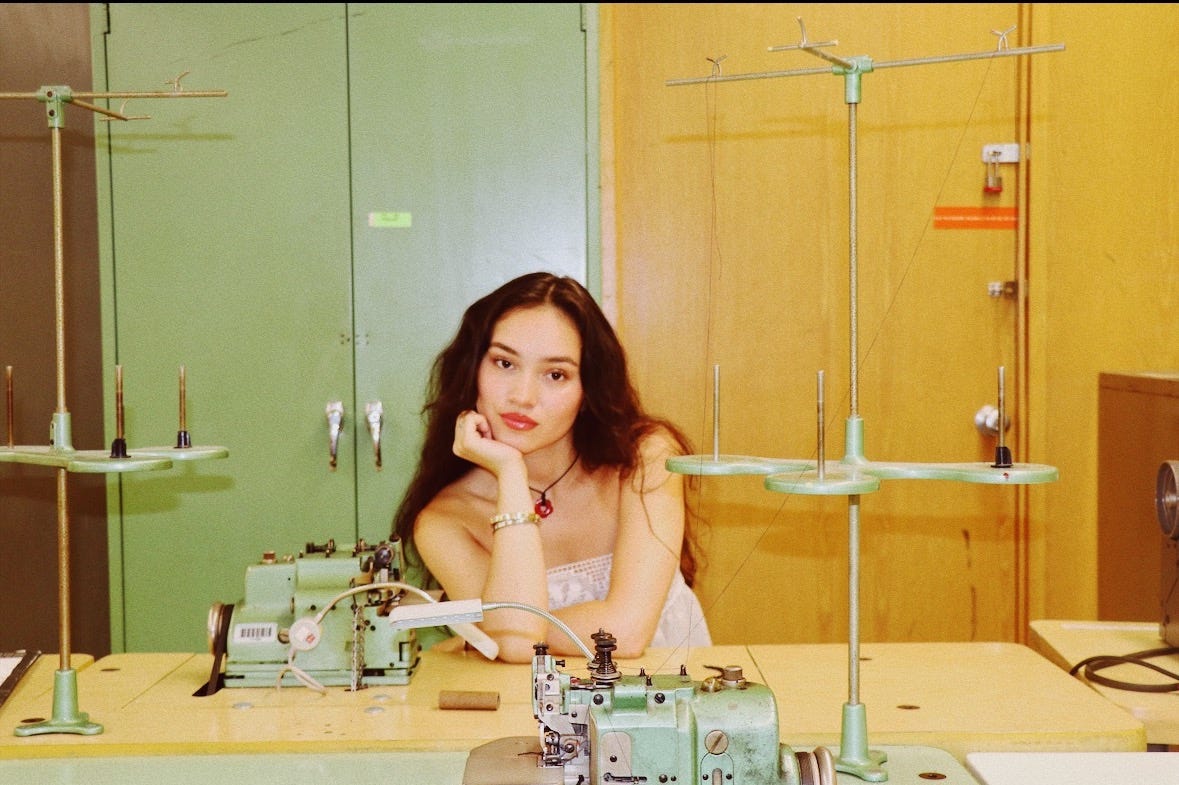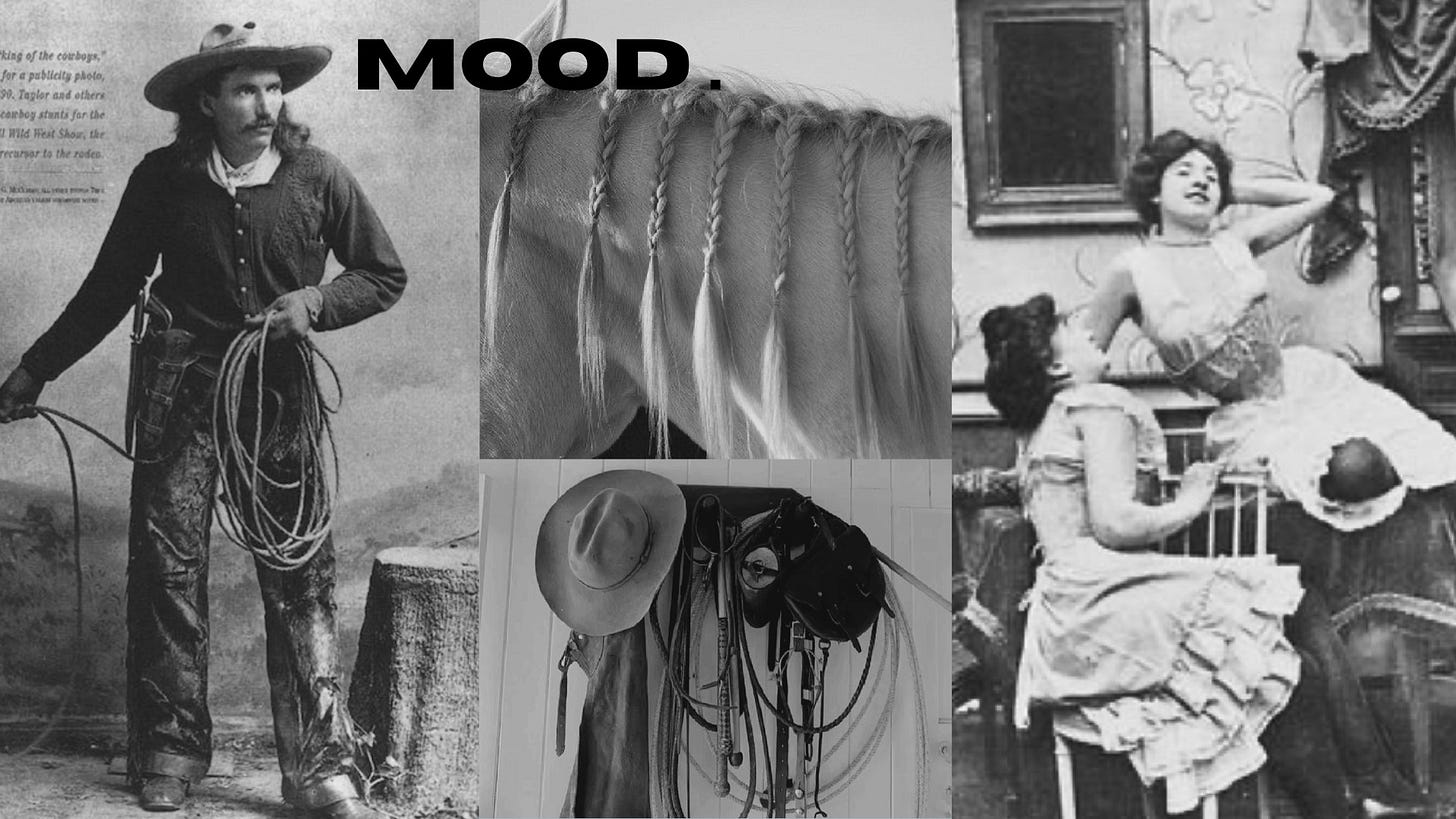Now You Know: Dahlia Gonzalez
The Stetson "Reimagining the West" contest winner on pivoting after tragedy, the joy and grief of growing up, and why fashion will never die.
Fashion Institute of Technology alum, Dahlia Gonzalez, may have spent the last four years making a name for herself in New York City, but don’t get it twisted—her heart beats for the West.
“I’m originally from Oakland, CA. Specifically Piedmont, but I was born in Berkley so I’m a California girl for sure,” she told Mixed Prints during an interview in May.
Interestingly enough, it was the iconic fashion of the American West that put Gonzalez on our radar in the first place. Earlier this year, she was one of the coveted winners of the Stetson “Reimagining the West" contest in partnership with FIT. For the competition, the legendary brand founded by John B. Stetson challenged students to reinterpret classic western style and the Stetson brand through their own custom designs. Contest participants were tasked with designing two looks that brought their unique artistic point of view to life while also honoring Stetson’s heritage.
Inspired by traditional cowboys, lady sheriffs, and the saloon girls of Old Hollywood Westerns, Gonzalez crafted two looks that “aimed to convey power and create tension through contrasting textures and fabrics,” said the brand. Gonzalez’s designs garnered praise from an esteemed panel of judges and also nabbed her a contest win, alongside fellow FIT student Annabelle Huntzinger, who was also awarded.
Mixed Prints caught up with Gonzalez shortly before graduation to chat about winning over the Stetson team, where she finds inspiration to create, and what’s next for the soccer-star-turned-budding-fashion-designer.
“I’m really excited and very proud of myself,” said Gonzalez. “I feel very grateful. That’s the overarching theme of what this has meant to me, and I’m really excited for the future.”
Mixed Prints: I want to talk about all things Stetson, but let’s start from the top. How did you get into fashion?
Dahlia Gonzalez: Art has always been a huge part of my life and I love clothes. However when I was little, I had my heart set on being a professional soccer player. I started playing competitive soccer when I was around 6 or 7, and did that for many years until about 16 years old when I blew my knee out.
MP: That must have been devastating.
DG: It sucked. I was really depressed because from age 6 to 16 that was all I knew. That was my dream, and it was like, now what? But I adopted this mentality that everything happens for a reason. When your big dreams or plans get derailed, I think the universe is clearing space for something bigger—which ended up being [fashion] for me.
MP: So this is where your FIT journey begins.
DG: My mom and boyfriend at the time were like, you’re really good at art and you love fashion, so why not give this a try? I was not someone who had my heart set on going to fashion school in New York, and to be honest I barely made the application deadline! The only reason I ended up getting in was because there was a 24-hour grace period on the application. I was writing that essay up until the last second.
MP: Did you apply as a design student or find your way to design later?
DG: I applied as a Fashion Design student. For the entry project, I had to make 6-10 looks, and write a summary about the work. At the time I was really inspired my Jhene Aiko’s “Chilombo” album, which had just come out. It’s very much about healing and being connected to the earth, each other, and oneself and that’s what I was into at the time. So I created some looks inspired by a few songs from that album.

DG: The second half of the project featured streetwear inspired by Oakland. I love street art and murals and how those things elevate voices from those communities, so I made a custom print inspired by that. I have the looks from this entry project hung up in my room at home and every time I see them, I’m like…
MP: Wow I made that…
DG: No. More like, OMG I sucked at drawing! Not to toot my own horn but compared to the stuff I’m doing now, it was rough.
MP: Isn’t it fascinating to look back on things you’ve created and see the growth?
DG: It’s really cool to see a visual representation of where you were and where you’re going.
“It’s really cool to see a visual representation of where you were and where you’re going.”
MP: How did the Stetson “Reimagining the West” contest get on your radar at FIT?
DG: I have a friend named Sophia Hayes who is so beyond talented, and she is constantly pushing me to get out of my comfort zone. She’s always sending me jobs, and model castings, and styling opportunities…
MP: That’s a good friend.
DG: She’s a great friend and she’s taught me so much. She applied as well and encouraged me to do the contest, so I decided to go for it. As I got started, I was sketching these ideas and picking my roommate’s brain about what I should do. He’s really into costume design, and he suggested I look into Old Hollywood.
DG: After doing some research, I realized I love the old aesthetic of Western movies and that typical idea of an American cowboy. In the creative brief [for the contest], the brand gave us the backstory of how Stetson came to be, and I felt that John B. Stetson kind of did the reverse of what I later did—he came from the East coast to the West coast to chase a dream and do better for himself. I was really inspired by that because it reminded me of myself coming to New York from the West.
I was also thinking about women who go to California to chase this dream of becoming a star, and all the hardships that come along with that. What did Old Hollywood Western mean to these women who were acting in those classic movies? Focusing on the women of that time was really important, and I wanted to take masculine silhouettes and make them a little more feminine. My two big inspirations were lady sheriffs and saloon girls.
MP: That really came through in your work. I love the way you incorporated the lace and the tiered skirting. What fabrics did you lean on for these looks?
DG: I used chiffon, lace, vegan leather, and velvet. The accessories were inspired by my personal Mexican heritage, so I made a bolo tie as well.
"The two big inspirations were lady sheriffs and saloon girls.”
MP: Loved the bolo tie! A perfect finishing touch.
DG: My dad is from Mexico so I’ve always had that influence. I think these looks [nod to] traditional caballeros, or “ranchers” as we would say in English. I feel like western wear overall has a lot of Latin American influence.
MP: How do you feel about fashion brands drawing inspiration from other cultures?
DG: If you want to draw inspiration from a culture that’s not your own, it’s just important to go about it in a way that’s not ripping people off, you know?
Cultural dress is important and if we don’t share it, it gets lost. I think there are respectful ways to do it. If designers want to go that route, try to work with [artisans] who live in those regions and communities.
MP: At what point did you discover you actually might win this Stetson contest?
DG: After submitting the sketches, I wasn’t expecting to move forward at all. I jumped on the contest kind of last minute, I didn’t have any expectations about what was going to happen, and when I got the email that I was moving forward, I was like, woah, this is real. And I actually have to make these garments now!
MP: The consequences of your ambitious actions!
DG: These looks were the most finished state of a garment I had ever made. Look 1 was a full dress and look 2 was a skirt, an under bust corset, and a top. It was a lot of trial and error and not sleeping. Plus, a lot of these pieces I had never made before. I had never really worked with chiffon, so of course I decided to make a long dress with tiers and rows of chiffon.
“Cultural dress is important and if we don’t share it, it gets lost.”
MP: There’s got to be a first time for everything, right?
DG: You don’t know until you try! I was learning a lot, but it was a lot. I was literally sewing the buttons on the garment right before the final presentation.
MP: Were you nervous to present your work?
DG: I have my teacher Patrick Cupid to thank for this, who was very adamant about his students learning to present. In his class, I did presentations on AI, on climate change, all kinds of topics. As much as I hated doing it in the moment, I think it really prepared me, and I had confidence going into the Stetson presentation because I had been working on these looks for months. If anyone knew about this garment, it was me! So I just thought, you know what? Eff it. I’m just going to go in there and do the best that I can. Maybe they’ll like the collection, maybe they won’t, but that part is out of my control.
MP: I love that perspective. It’s very Rick Rubin “the audience comes last” energy.
DG: I think that mentality is important. I’ve spent too much time in the past trying to make others happy and not knowingly making myself miserable because I was getting further away from who I really was and what I wanted to be. It never works out in my favor when I try to impress somebody else.
“It never works out in my favor when I try to impress somebody else.”
MP: As your fashion school era comes to an end, what are you most inspired by these days?
DG: Honestly? Growing up. I feel my frontal lobe developing as we speak.
Do you ever listen to Norah Jones?
MP: Oooh, yes. Big fan of Norah Jones. That “Come Away With Me” album is on constant rotation.
DG: YES! You should title this article,“Norah Jones and Why Everyone Should Listen to Her Music.”
MP: Ha, I’ll consider it! She’s a big inspiration to you?
DG: I love her music, and my thesis was inspired by Norah Jones’ last album, [“Visions.”] She has a song on the album called “That’s Life,” and listening to that song made me reflect on what it means to be growing up, showing up for myself, and just pushing the boulder up the mountain every day. The joy and grief of growing up is just a big theme shaping my life right now.

MP: Do you have a dream job in mind as you enter the industry?
DG: To be honest, I’m not sure what’s next.
MP: That is OKAY. I love the honesty.
DG: I used to feel a lot of guilt about this, but everyone I talk to—even grown adults in their careers—say that nobody knows what they want to do ever, right?
MP: Correct. Can confirm.
DG: I find it comforting that even successful people who are rooted in careers still consider making a change or switching things up. For me, I love connecting with people and working with others. I think that comes from soccer—the feeling of being a part of a team. I hope I end up somewhere in fashion, beauty, or pop culture because I love those spaces, but as long as I like the people I’m working with even the toughest days will be okay.
MP: Work is work but at the end of the day, if you can have fun with your team that changes everything. Especially in creative fields.
DG: I just want to be somewhere I can feed my brain and be happy and connect with others.
MP: I always love asking fashion designers this question: What designers are you into at the moment?
DG: Collina Strada. I would call her out, I think she’s great. And the brand gives away its textiles to students at a discounted rate.
DG: Also, Leanne Huang. They make really cool, colorful printed clothes.
The shift to quality clothing over a bunch of cheaply made clothes is encouraging me these days. I’m optimistic that my classmates and I will take some of these sustainable fashion values into the workforce with us, and as we climb up the ladder, we’ll be able to make actual change. Did you sign the Fashion Act? I’ve been sending it to everyone.
MP: I need to! I will. I think your generation will turn this around, and I’m encouraged to hear your passion on this topic. When I was at FIT, fashion waste wasn’t even a topic of discussion.
DG: My mom is like this so I think I get it from her, but I’m a delusional optimist. I try to be involved and not stick my head in the sand, because we’re not going to change anything by ignoring the [fashion waste problem.] I remain optimistic and hopeful for the future.
“I’m optimistic that my classmates and I will take some of these sustainable fashion values into the workforce with us, and as we climb up the ladder, we’ll be able to make actual change.”
MP: There’s a sign on the wall behind you.
“Fashion is Fucking Back!” What’s that about?
DG: It’s from some newspaper from The RealReal. I’ve had that on my wall since I moved into my college dorm 4 years ago. I’ll probably keep it forever. I look at it every day and I’m like, yes! Fashion is f*cking back.
MP: I feel like every year for whatever reason, industry critics are saying fashion is dead. This or that generation killed fashion. Fast fashion killed fashion. Social media killed fashion. What’s your take?
DG: I don’t think anything can ever kill fashion. I think we can all look back and regret some choices, but…fashion lives forever.
MP: Fashion is enduring.
DG: Like a cockroach. There’s just no killing it.
View Dahlia Gonzalez’s entire senior thesis collection, “That’s Life,” here.
To keep up with the designer and her work, visit her website.










